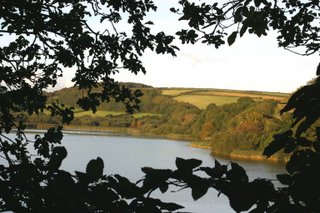Beachwatch!

Wouldn't it be good if you could take a snap shot of all the litter that washed up on the UK coast, count and categorize it so that you could gain a picture of where it concentrates, how much there is and what it consists of. You might then have some of the information you need to begin to work out where it comes from and to ultimately do something about it. That's what the Marine Conservation Society in the UK (MCSUK) has been doing since 1993 to help target specific sources of litter and influence government policy and industry practices. Beachwatch is an annual nation-wide beach clean-up and litter survey. It takes place once every year, over the third weekend of September.
 I was assigned our local beach, Loe Bar, for a Sunday morning's litter-picking and was joined by Len, Davide, Heather (a local volunteer) and Edwina from Austria. We categorized Davide and Edwina under 'foreign objects'. You can see Heather, me and Davide in the picture brandishing clipboards and litter-pickers.
I was assigned our local beach, Loe Bar, for a Sunday morning's litter-picking and was joined by Len, Davide, Heather (a local volunteer) and Edwina from Austria. We categorized Davide and Edwina under 'foreign objects'. You can see Heather, me and Davide in the picture brandishing clipboards and litter-pickers.I phoned Noel Perry, the Community Editor of the West Briton yesterday to let him know what we were up to. He seemed pretty interested and suggested I drop him a line. The MCS send Beachwatchers a media pack which they can use to promote marine conseravion in their area. I'll fire Noel an email with the press release info and a photo and see if we can get a conservation article into print for next week's paper. We might be in danger of being overshadowed by the excellent effort yesterday on Gunwalloe Fishing Cove made by David Roberts of Kennack Diving near Helston. He and 30 other volunteers not only combed the shore but organised a SCUBA sweep of the near shore as well.


The main hazards to be aware of apart from the sea itself were any glass fragments, sharp metal or needles. Luckily we found none. The vast majority of waste seemed to be from fishing line and nets. All that remains now is to tally up the data and send off the completed forms to MCSUK who will analyse the results and try to identify significant patterns regionally and nationally.
Loe Bar is an unusual and treacherous stretch of coastal vegetated shingle that separates the freshwater of Loe Pool from the sea. The mysterious Loe Pool is the fabled resting place of King Arthurs sword Excalibur. You can find it here. English Nature have designated the coastal lagoon of Loe Pool and the Loe Bar beach as a Site of Special Scientific Interest (SSSI). The Loe Pool SSSI as it is known, covers nearly 130ha and includes the largest freshwater lagoon in Cornwall. Both the pool and the shingle bar provide habitat that is scarce elsewhere in the county.
The pool supports rare aquatic plants such as Six-stamened Waterwort, Perfoliate Pondweed, Shoreweed, Horned Pondweed and Amphibious Bistort. On the bar you can find Sea Holly, Sea Fern-grass, Yellow Horned Poppy, Sea Sandwort, Sea Mayweed and a real rarity - Strapwort. Loe Pool is an important site for as many as 1,200 wildfowl in winter including about 80 species. Nationally important numbers of Shoveler have been recorded as have regionally important counts of Teal and high counts for Pochard, Tufted Duck, Mallard, Goldeneye, Gadwall and Coot. Little holes excavated a metre below the cliff edge are a tell-tale sign that Sand Martin breed here in Summer. There is a locally important presence of some 20 pairs.

Many rare invertebrates live in the sediments of the pool because of its rich nutrient status and 9 species of dragonfly and damselfly can be found including the Keeled Skimmer. Rare beetles, wasps and a woodlouse found nowhere else in the county have also been noted here.
Perhaps the most exciting rarity on the bar is the only known population of the Cornish subspecies of Sandhill Rustic Moth. I was fortunate enough to have a chance encounter with local lepidopteran expert Adrian Spalding returning from the bar last week. Adrian was happy to open up a file of information based on over a decade's fieldwork on the bar aimed at understanding why this Sandhill Rustic Moth occurs where it does. Adrian explained that the moth had the ability to withstand baking hot daytime temperatures in direct sunlight on the shingle where it remains concealed from predators by its cryptic wing markings. Its distribution shows a strong association with its food plant Sand Couch Grass which is highly saline tolerant. The most suprising attribute of this secretive insect is its apparent readiness to submerge itself completely in seawater for over an hour at a time - an underwater moth! This seems to be a behavioural adaptation to periodic flooding of its habitat by sea water. These specialist factors seem to combine to give this moth the competitive advantage in the vegetated coastal shingle found on the bar and could account for its rarity.


0 Comments:
Post a Comment
<< Home